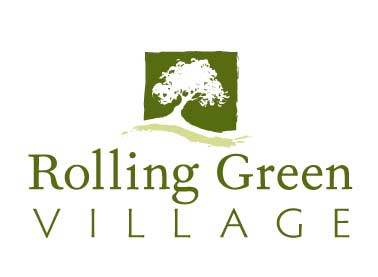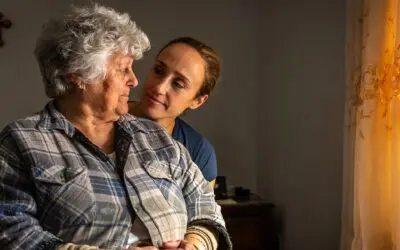Tips to Find the Senior Living Community, for you!
Some terms don’t fully capture the variety of what they describe. Think of the terms “pickup truck” or “electric guitar.” Certainly, there’s more than just one type of each of these. There are so many different versions, in fact, that a prospective buyer will want to spend some time checking them out. Senior living communities are a little like that. On its own, the term senior living community doesn’t tell you much. What kind of community is it? Who is it designed for? What are its strengths and weaknesses? There are many more questions like these. The bottom-line question is: Which is the right senior living community for me? These 9 tips will lead you to the answer.
1. Have a professional walk you through the different types of retirement communities.
Perhaps the first type is an age-restricted senior apartment at a 55-plus or 62-plus retirement community. This type of retirement community may offer some senior-friendly amenities, or fitness options, but medical and personal care aren’t typically included.
A rental retirement community will offer independent living that includes meals, housekeeping, maintenance and activities, and perhaps some form of assisted living services or higher levels of care, such as memory care and skilled nursing care, at an extra cost.
An equity or ownership-style retirement community lets you purchase an apartment. Residents pay a monthly maintenance fee as well as association dues and are responsible for covering real estate taxes and assessments. Renovations are typically paid by the owner. Assisted living may be available for an additional daily cost, but a need for memory care or around-the-clock skilled nursing care would likely require you to sell the residence and move out. Monthly fees on this type of residence must still be paid until it’s resold.
Life Plan Communities (also called Continuing Care Retirement Communities or CCRCs) offer a full continuum of care, including independent living, assisted living, skilled nursing, memory care and senior rehabilitation, all on the same campus or within the same building. These types of communities require an entrance fee as well as an ongoing monthly fee. Usually, some portion of the entrance fee is refundable to you or your estate when you leave.
The team at Rolling Green Village would be more than happy to clarify the details and answer any questions you may have.
2. Determine the levels of care you may need.
As stated above, different types of communities offer different levels of care. Here’s a summary of what each level means.
Independent living is for older adults who don’t need care immediately. Within the framework of a continuing care retirement community, independent living typically lets residents enjoy a private apartment or cottage, meals in a restaurant setting, housekeeping services, amenities for fitness and wellness, social activities and potentially much more. These communities simplify life and add to one’s leisure time.
Assisted living provides help with daily tasks — taking medicines, bathing, dressing, meals and housekeeping. There are “stand-alone” communities that offer residential assisted living, as well as communities where assisted living is but one level on a continuum of care offered at the same location.
Skilled nursing, either short- or long-term, is available at nursing home facilities dedicated to providing those services, or at a Life Plan Community offering multiple levels of care.
A Life Plan Community like Rolling Green Village offers all levels of care in one setting — independent living residences for those in good health, assisted living for those who need help with daily activities, memory care and long-term nursing care, as well as senior rehabilitation therapies. Residents can move from one level of care to another as needed.
3. Consider the community’s location.
Proximity to family is almost always a prime consideration when searching for just the right senior living community. But that aside, there are other factors to keep in mind. Whether you’re looking for a residence in a peaceful rural setting or one with a more urban vibe, give careful thought to each of these areas:
· Cost of living
· Activities available
· Local crime
· Weather
· Presence of other retired people
· Access to care services
4. Look closely at these key areas.
WHAT SIZE COMMUNITY FEELS RIGHT?
Resident populations may vary from fewer than 100 to more than 1,000. Some are high-rise buildings with no real campus; others are spread across acreage.
WHAT TYPES OF RESIDENCES ARE OFFERED?
Apartments? Cottages? Villas? Patio homes? Can you find the space and floor plan you need?
DOES THE COMMUNITY HAVE THE AMENITIES YOU DESIRE?
Dining venues, fitness centers, on-site clinics, a pool and spa, even an arts and crafts studio are just some of the amenities offered today.
WHAT ABOUT COST?
Rentals often provide residency with no large, upfront fee, but may offer few services and amenities, and possibly no care at all. Life Plan Communities and Continuing Care Retirement Communities include a richer array of extras, but typically charge higher fees. There are also usually multiple types of contacts from which to choose. It’s important to determine what is and isn’t included.
WHAT ARE THE COMMUNITY’S CREDENTIALS?
Does the organization hold not-for-profit status, or is it a for-profit business? How long has ownership and management been in place, and how financially stable is the organization? What is the status of their state licensures? What is the average tenure of staff members? Have any complaints been lodged by former residents or family against the community?
5. Learn everything you can about meals and dining.
How and when you’ll be eating will be a major part of the community experience. How liberal are the community’s dining policies? Are there multiple dining venues? Who plans and prepares the meals, a food service or an on-site executive chef? Does the community accommodate special dietary requirements? If possible, arrange to share a meal or two with residents for a firsthand assessment of the quality of dining.
6. What types of activities does the community offer?
And what’s the level of resident involvement? Some communities allow residents to plan and organize groups and activities based on their interests. Other communities employ a dedicated director of life enrichment and are good at hosting interesting entertainment and educational events. Ask to see a monthly activities calendar and ask questions about what it tells you. Do the same activities repeat frequently throughout the week? Can you see yourself becoming enthusiastic about them? Part of what a good community offers is a variety of meaningful activities.
7. What are residents like?
Communities often claim that residents who’ve lived there awhile take on the feeling of family. If that’s true, you’ll want to have some idea about your new family members. Be sure to tour early in your selection process. Ask if you can sit in on a particular class or workshop that interests you. Notice the average age, male-female ratio, and percentage of couples versus singles in the community. You want to find a place where you can make friends easily and stay engaged in social events.
8. Tour the amenities and physical assets.
Are you seeing places where you want to spend time? Are the library and fitness center up to your expectations? Are there attractive and functional outdoor spaces for residents to enjoy? These days, retirement communities can have their own salon and barbershop; multiple dining venues for formal, casual and takeout food; an aquatic center with a heated saltwater pool and spa; and more. If you’re not seeing the level of amenities you desire, inquire whether the community has expansion plans in the near future.
9. Get clarity on which services are included and which cost extra.
Some communities charge a flat monthly fee for a variety of services and others provide more services à la carte. Some include utilities, but others require you to set up your own accounts for electricity, cable TV and internet. What’s the extent of housekeeping? Is a complete change of linens included regularly? Do residences have washers and dryers, or is there a communal laundry room? Does a staff nurse deal with minor illnesses, and do her services cost extra? Find out what you’ll pay out of pocket and what is covered in the residency agreement.
Could Rolling Green Village be the right community for you?
Situated on 175 beautiful acres, there’s room to relax at Rolling Green Village. Walk our paths. Take in the scenery. And imagine just how satisfying retirement life can be. You can choose a patio home in one of six suburban neighborhoods, or an apartment home connected to our Village Center. You’ll definitely want to ask about our new Apartments on Village Creek. Each of these options offer the freedom to live each day as you please, taking advantage of the many amenities and services designed to help you feel good and live well.
With a choice of 12 floor plans ranging from studios to spacious three-bedroom apartments, you’re sure to find one that fits your needs. Just contact us to have a Rolling Green Village team member follow up to learn more about your specific needs, and to help you find your perfect home.



